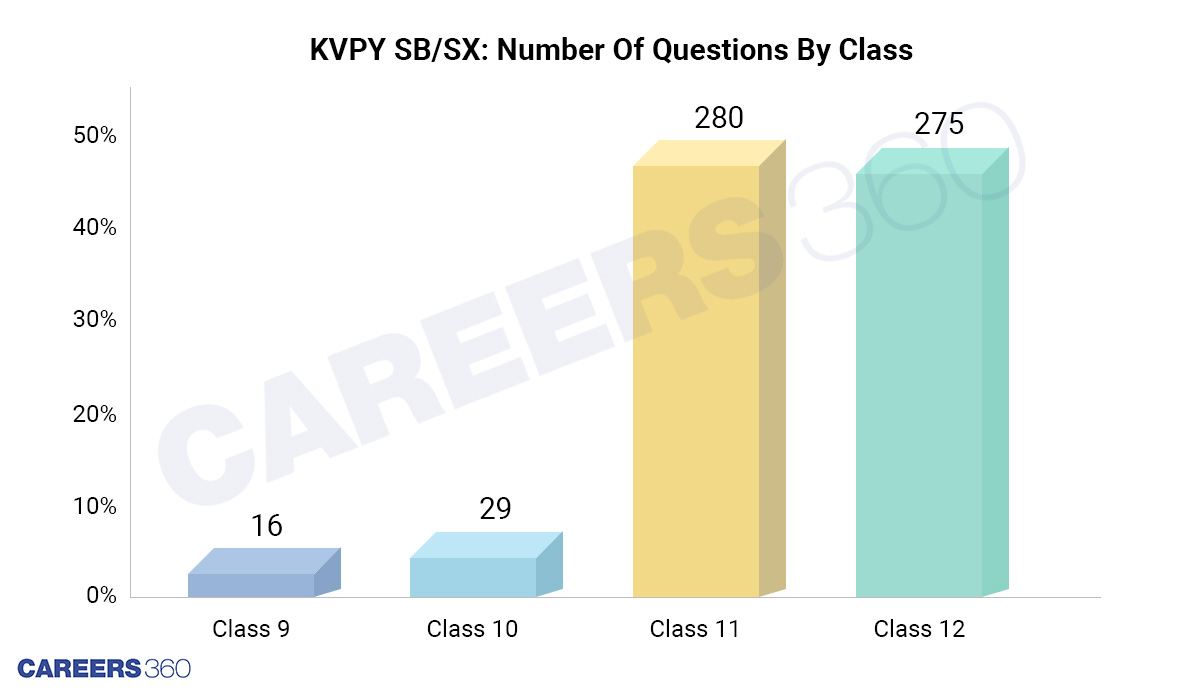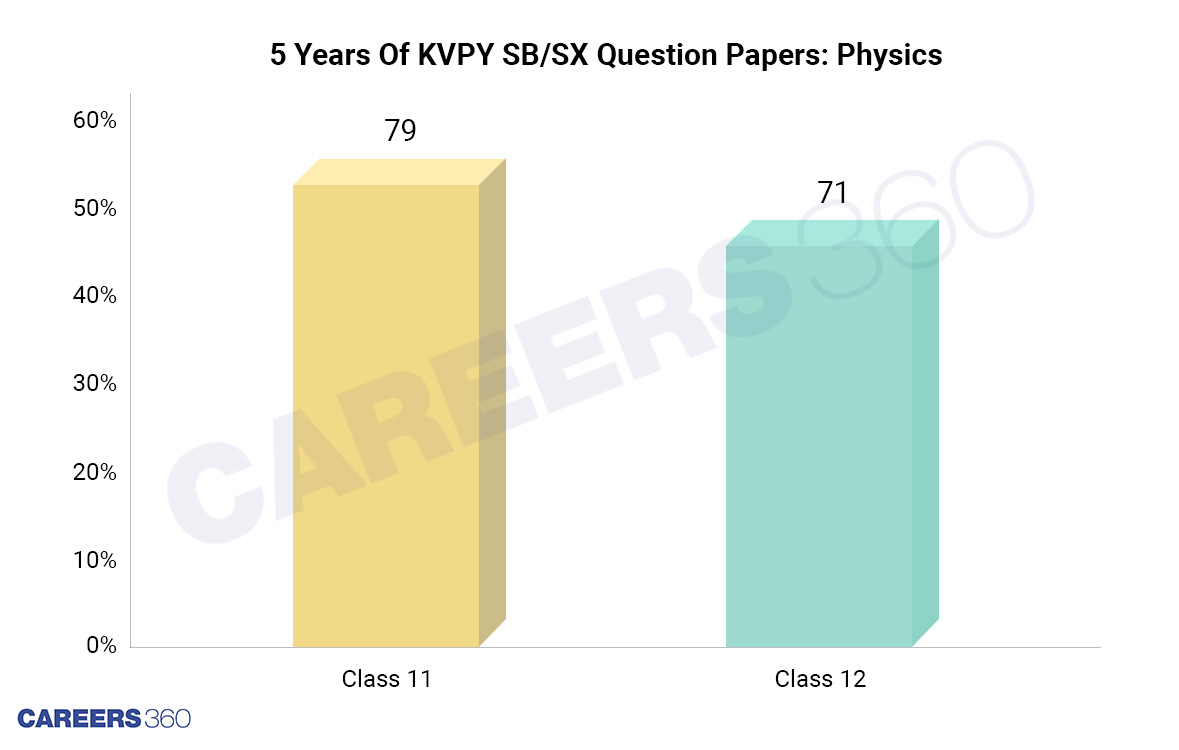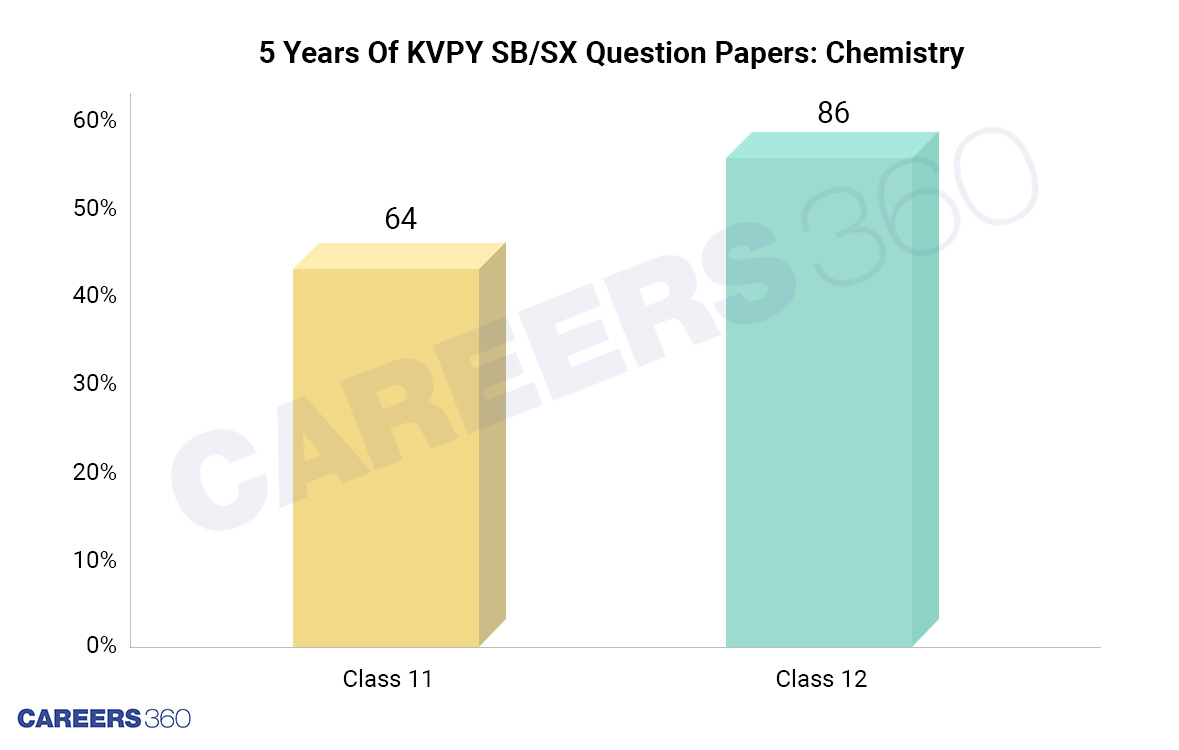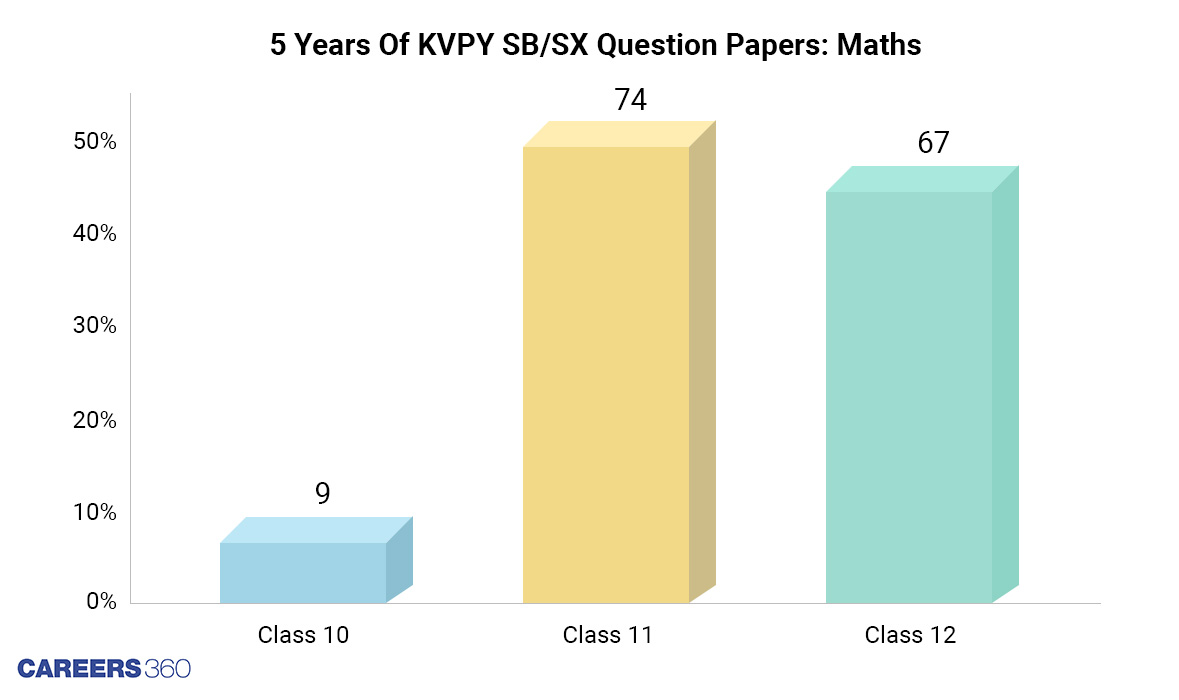KVPY Exam: Previous Years’ Question Papers, Exam Pattern Analysis
The Kishore Vaigyanik Protsahan Yojana (KVPY) examination is designed for students planning to pursue a career in the basic sciences. The objective of the KVPY exam through which students are selected for scholarships, is to identify and nudge talented students towards scientific research and development. The Indian Institute of Science (IISc) Bangalore conducts the KVPY- SB/SX exam for students in Class 12 and first year of undergraduate studies in the sciences.
This Story also Contains
- KVPY SB/SX Exam: Eligibility Criteria
- KVPY Exam 2022: SB/SX Exam Pattern
- KVPY SB/SX Exam Pattern
- KVPY Syllabus For SB/SX
- KVPY Previous Years’ Papers: SB/SX
- KVPY Exam 2022: Subject-Wise Preparation
- Preparing for KVPY SB/SX: Useful Tips

NOTE- DST has decided to subsume KVPY with INSPIRE. KVPY Aptitude test will not be conducted from the year 2022 onwards. Ongoing KVPY fellows will continue to receive fellowship as per norms from DST.
KVPY SB/SX Exam: Eligibility Criteria
SX- Stream
Students in Class 12 can appear for the KVPY-SX exam when it is conducted in the same academic year. The students from unreserved categories must secure a minimum score of 60% and those from Scheduled Castes, Scheduled Tribes and disabled groups (SC, ST, PWD) need 50% aggregate marks in Physics, Chemistry, Maths and Biology in the Class 12 board exam. After that, the student must join an undergraduate programme in Basic Sciences, pursuing a BSc, BStat, BS, BMaths, Integrated MSc or MS to get the scholarship.
SB- Stream
The KVPY SB exam is taken by the students enrolled in the first year of the UG course in Life Sciences during the academic year in which the KVPY exam is conducted. To be eligible, the candidate has to be pursuing a basic science degree such as a BSc, BStat, BS, BMaths, Integrated MSc or MS in subjects like Physics, Chemistry, Microbiology, Mathematics, Biochemistry, Statistics, Cell Biology, Molecular Biology, Ecology, Biotechnology, Zoology, Botany, Physiology, Bioinformatics, Neurosciences, Geology, Human Biology, Marine Biology, Biomedical Sciences, Genetics, Geophysics, Applied Physics, Environmental Science or Materials Science. Students from unreserved categories must secure a minimum of 60% in the final examination of their year in the UG programme. For SC, ST, PWD candidates, the minimum score is 50%.
Due to the COVID-19 pandemic, students who have passed Class 12 can appear for the KVPY-SB. The minimum percentage requirement has been temporarily waived.
KVPY Exam 2022: SB/SX Exam Pattern
The KVPY SB/SX question paper is divided into two sections. From Section I, you have to choose any three of the four subjects – Maths, Biology, Chemistry and Physics. Each correct answer will fetch one mark and for each wrong one, 0.25 marks will be deducted from the total – this is the “negative marking” policy. From Section II, you have to choose any two of the four subjects. Each correct answer will fetch two marks; for each wrong one, 0.50 marks will be deducted.
KVPY SB/SX Exam Pattern
KVPY SB/SX Section I (Any 3) | Total Questions | KVPY- SB/SX Section II (Any 2) | Total Questions |
Physics | 20 | Physics | 10 |
Chemistry | 20 | Chemistry | 10 |
Biology | 20 | Biology | 10 |
Mathematics | 20 | Mathematics | 10 |
Maximum Questions To Attempt (1 question = 1 mark) | 60 | Maximum Questions To Attempt (1 question = 2 marks) | 20 |
Total marks | 60 | Total marks | 40 |
As per the KVPY paper pattern, you need to prepare for only three subjects of your choice thoroughly.
KVPY Syllabus For SB/SX
The question paper and syllabus are the same for both streams of KVPY SB/SX. Students should revise topics from Classes 11 and 12 and also Classes 9 and 10. Sticking to the textbooks by the National Council of Educational Research and Training (NCERT) for primary reference will help gain understanding. The exam is designed to check the student’s conceptual knowledge and analytical capacity. A better understanding of the concepts will prepare you appropriately for the exam.
KVPY Previous Years’ Papers: SB/SX
A thorough examination of the preceding five years' question papers can reveal critical information about the syllabus’ class-wise weightage distribution and key chapters. Students can develop their study plans using this. Careers360 examined old KVPY SB/SX questions and found that the questions are based on the topics taught from Class 9 to 12.
KVPY SB, KVPY SX Syllabus: Weightage By Class
A total of 600 questions from the previous five years were examined. This revealed that most questions were from Classes 11 and 12. Although carrying significantly less weightage, there were questions from Class 10 and Class 9 as well.
 KVPY SB/SX: Distribution of questions by class
KVPY SB/SX: Distribution of questions by class
This implies that to do well, students have to focus equally on Class 11 and Class 12 and a little on Classes 9 and 10 as well.
KVPY SB/SX Syllabus: Subject-Wise Analysis
As mentioned above, students are tested on four subjects for KVPY - SB/SX. An analysis of the weightage assigned to each chapter follows.
Physics
The table below shows the number of questions from each class in the Physics sections of five years of KVPY question papers.
 KVPY SB/SX: Distribution of Physics questions by class
KVPY SB/SX: Distribution of Physics questions by class
The number of questions from Class 11 and Class 12 is about the same. Surprisingly, 52.7% percent of the questions came from the Class 11 syllabus, implying that Class 11 physics requires substantial attention.
Thermodynamics (Class 11), Atoms (Class 12), Electric Charges and Fields (Class 12), Laws of Motion (Class 11), Ray Optics and Optical Instruments (Class 12), System of Particles and Rotational motion (Class 11), Thermal Properties of Matter (Class 11) are some of the crucial topics that need more attention as they have had more weightage over the past few years.
The following chart shows how many questions came from each chapter.
KVPY Physics Syllabus: Chapters, Questions Over 5 Years
Chapter Name | Class | Number of Questions |
Thermodynamics | 11 | 16 |
Atoms | 12 | 10 |
Electric Charges and Fields | 12 | 9 |
Laws of Motion | 11 | 8 |
Ray Optics and Optical Instruments | 12 | 8 |
System of Particles and Rotational motion | 11 | 8 |
Thermal Properties of Matter | 11 | 8 |
Electromagnetic Induction | 12 | 7 |
Mechanical Properties of Fluids | 11 | 7 |
Oscillations | 11 | 7 |
Units and Measurement | 11 | 7 |
Wave Optics | 12 | 7 |
Dual nature of radiation and matter | 12 | 6 |
Electrostatic Potential and Capacitance | 12 | 6 |
Moving charges and magnetism | 12 | 6 |
Waves | 11 | 4 |
Work, Energy and Power | 11 | 4 |
Alternating Current | 12 | 3 |
Electromagnetic Waves | 12 | 3 |
Kinetic Theory | 11 | 3 |
Nuclei | 12 | 3 |
Gravitation | 11 | 2 |
Motion in a straight line | 11 | 2 |
Semiconductor Electronics: Materials, Devices and Simple Circuits | 12 | 2 |
Current Electricity | 12 | 1 |
Mechanical Properties of Solids | 11 | 1 |
Motion in a Plane | 11 | 1 |
Physical-world | 11 | 1 |
Chemistry
The table below shows the number of questions from each class' Chemistry syllabus asked over the last five years. Unlike in Physics, the Class 12 Chemistry syllabus has significantly higher weightage than the syllabus for Class 11, demanding more attention.
 KVPY SB/SX: Distributions of Chemistry questions by class
KVPY SB/SX: Distributions of Chemistry questions by class
Aldehydes, Ketones and Carboxylic Acids (Class 12), Coordination Compounds (Class 12), Organic Chemistry- Some Basic Principles and Techniques (Class 11), Equilibrium (Class 11), Solutions (Class 12), The Solid State (Class 12), Chemical Bonding and Molecular Structure (Class 11), Chemical Kinetics (Class 12), Electrochemistry (Class 12) are some of the crucial topics that should be studied thoroughly.
Given below is a more detailed analysis of where the questions came from.
KVPY Chemistry Syllabus: Chapters, Questions Over 5 Years
Chapter Name | Class | Number of Questions |
Aldehydes, Ketones and Carboxylic Acids | 12 | 16 |
Coordination Compounds | 12 | 14 |
Organic chemistry- some basic principles and techniques | 11 | 11 |
Equilibrium | 11 | 9 |
Solutions | 12 | 9 |
The Solid State | 12 | 9 |
Chemical Bonding and Molecular Structure | 11 | 8 |
Chemical Kinetics | 12 | 8 |
Electrochemistry | 12 | 8 |
The P-Block Elements | 11 | 7 |
Amines | 12 | 5 |
structure of Atom | 11 | 5 |
Thermodynamics | 11 | 5 |
Haloalkanes and Haloarenes | 12 | 4 |
Hydrocarbons | 11 | 4 |
Alcohols, Phenols and Ethers | 12 | 3 |
Polymers | 12 | 3 |
Redox reaction | 11 | 3 |
Some basic concepts of Chemistry | 11 | 3 |
States of Matter | 11 | 3 |
Biomolecules | 11 | 2 |
Chemistry in Everyday life | 12 | 2 |
Classification of elements and periodicity in properties | 11 | 2 |
Surface Chemistry | 12 | 2 |
The d and f block elements | 12 | 2 |
General Principles and Processes of isolation of elements | 12 | 1 |
Hydrogen | 11 | 1 |
The S-Block Elements | 11 | 1 |
Maths
As the chart below shows, in the case of Maths, Class 11 topics have had more weightage than Class 12 over the last few years.
 KVPY SB/SX: Distribution of Maths questions by class
KVPY SB/SX: Distribution of Maths questions by class
In the case of Maths, students will benefit significantly from focusing just on Class 11 and Class 12 syllabi, as they accounted for 49.3% and 44.7% of the problems, respectively. Only a few questions were from the Class 10 syllabus.
Conic Sections (Class 11), Trigonometric Functions (Class 11), Application of Derivatives (Class 12), Complex Numbers and Quadratic Equations (Class 11), Relations and Functions (Class 12), Continuity and Differentiability (Class 12), Applications of trigonometry (Class 10), Polynomials (Class 10), Integrals (Class 12) are a few important topics that the students should study.
The table below shows how many questions came from each topic of Mathematics over the past five years.
KVPY Maths Syllabus: Chapters, Questions Over 5 Years
Chapter Name | Class | Number of Questions |
Conic Sections | 11 | 17 |
Trigonometric Functions | 11 | 17 |
Integrals | 12 | 12 |
Application of Derivatives | 12 | 10 |
Complex Numbers and Quadratic Equations | 11 | 10 |
Relations and Functions | 12 | 9 |
Continuity and Differentiability | 12 | 8 |
Probability | 12 | 8 |
Sequences and Series | 11 | 8 |
Limits and Derivatives | 11 | 7 |
Application of Integrals | 12 | 6 |
Matrices | 12 | 5 |
Permutations and Combinations | 11 | 5 |
Vector Algebra | 12 | 5 |
Binomial Theorem | 11 | 4 |
Coordinate Geometry | 10 | 3 |
Applications of trigonometry | 10 | 2 |
Linear Programming | C 12 | 2 |
Polynomials | 10 | 2 |
Sets | 11 | 2 |
Straight Lines | 11 | 2 |
Circles | 10 | 1 |
Determinants | 12 | 1 |
Inverse Trigonometric Functions | 12 | 1 |
Linear Inequalities | 11 | 1 |
Mathematical Reasoning | 11 | 1 |
Triangles | 10 | 1 |
Biology
In Biology, the representation of Class 11 and Class 12 is more or less the same. Interestingly, the Class 9 and Class 10 syllabus also has an appreciable weightage.
5 Years Of KVPY Question Papers: Biology
Class | Number of Questions | Percentage |
Class 9 | 16 | 10.7% |
Class 10 | 20 | 13.3% |
Class 11 | 63 | 42.0% |
Class 12 | 51 | 34.0% |
In Biology, 42% of the questions were from Class 11 and 34% from Class 12. The syllabi from Classes 9 and 10 together accounted for 14% of the questions.
Biomolecules (Class 11), Molecular Basis of Inheritance (Class 12), Respiration in Plants (Class 11), Heredity and Evolution (Class 10), Cell: The Unit of Life (Class 11), Organisms and Population (Class 12), Principles of Inheritance and Variation (Class 12), “Why do we fall ill?” (Class 9), Natural Resources (Class 9), Our Environment (Class 10) are some of the more important topics.
KVPY Biology Syllabus: Chapter Questions Over 5 Years
Chapter Name | Class | Number of Questions |
Biomolecules | 11 | 15 |
Molecular basis of inheritance | 12 | 12 |
Respiration in Plants | 11 | 11 |
Heredity and Evolution | 10 | 10 |
Cell: The Unit of Life | 11 | 9 |
Organisms and Population | 12 | 9 |
Principles of Inheritance and Variation | 12 | 9 |
Why do we fall ill? | 9 | 9 |
Human Health and Disease | 12 | 6 |
Our Environment | 10 | 5 |
Biotechnology: Principles and Processes | 12 | 4 |
Breathing and Exchange of Gases | 11 | 4 |
Digestion and Absorption | 11 | 4 |
Photosynthesis in Higher Plants | 11 | 4 |
Cell Cycle and Cell Division | 11 | 3 |
Natural Resources | 9 | 3 |
Sexual Reproduction in Flowering Plants | 12 | 3 |
Biodiversity and Conservation | 12 | 2 |
Biotechnology and its applications | 12 | 2 |
Diversity in Living Organisms | 9 | 2 |
Life Processes | 10 | 2 |
Locomotion and Movement | 11 | 2 |
Microbes in Human Welfare | 12 | 2 |
Neural Control and Coordination | 11 | 2 |
Anatomy of Flowering Plants | 11 | 1 |
Body Fluids and Circulation | 11 | 1 |
Chemical Coordination and Integration | 11 | 1 |
Control and Coordination | 10 | 1 |
Ecosystem | 12 | 1 |
Equilibrium | 11 | 1 |
Excretory Products and their Elimination | 11 | 1 |
How do organisms reproduce | 10 | 1 |
Human Reproduction | 12 | 1 |
Mineral Nutrition | 11 | 1 |
Plant Growth and Development | 11 | 1 |
Plant Kingdom | 11 | 1 |
The Fundamental Unit of Life | 9 | 1 |
The Human Eye and the Colourful World | 10 | 1 |
Tissues | 9 | 1 |
Transport in Plants | 11 | 1 |
KVPY Exam 2022: Subject-Wise Preparation
Targeting your main three subjects is of utmost importance. Other than the NCERT textbooks, students can opt for books designed for NEET or JEE exams to prepare. The National Eligibility cum Entrance Test (NEET) is for admission to undergraduate medicine and the Joint Entrance Exams (JEE Main and JEE Advanced) are for admission to engineering.
Given below are brief notes on what candidates should expect from questions in each subject.
Physics: Physics questions tend to be slightly tricky and are more concepts-based. A clear understanding of the concept as well as thorough practice are essential for solving the paper quickly.
Mathematics: The questions for this subject are mainly of JEE-level. So, you can practice from the books used for the JEE Main exam. Also, do a proper revision of all the formulae and mathematical values.
Chemistry: Broadly, two types of questions are asked – memory-based and concept-based. To ace the memory-based questions, you can prepare concept maps of each topic, including essential reactions and their names. This will also help you with last-minute revision.
Biology: All questions are strictly memory-based. So, memorising each topic properly is of utmost importance. You can revise with flashcards and form memory maps for quick revision.
According to students who did well, you can attempt Biology and Chemistry in the first quarter and then dedicate the remaining time to Maths and Physics.
Preparing for KVPY SB/SX: Useful Tips
Here’s the best way to prepare for KVPY exam SB/SX:
Check the syllabus and then decide the number of days required for each topic.
Make a weekly study plan according to the time available for preparation. Set targets for each topic in a subject and try to achieve it every week. Take breaks.
The secret to passing this exam is to revise thoroughly—study according to the exam pattern. Keep in mind the number of questions to be attempted, and the time in which they should be completed.
Pick books that have correct answers to questions and proper explanations. But stick to NCERT as the primary text.
After you've finished the syllabus, go through it at least twice or thrice before taking the test.
KVPY mock tests may be beneficial – take as many as you can. They will also train you to manage time during exams.
Concentrate on topics you have thoroughly prepared in the days leading up to the exam; do not attempt topics you have not thoroughly prepared for – they will only cause confusion during the exam.
Keep the policy of negative marking in mind. If you attempt a question you're unsure about, you risk losing marks.
Learn from your seniors who have already appeared for the exam.
Solve all of KVPY previous year question papers.
Stop revising one day before the exam.
To make it in the KVPY SB/SX, you need to start preparing as early as possible. Make it a point to complete your daily study target. Work diligently on each topic and do not keep a “margin for error” as it won’t do any good.
Applications for Admissions are open.
As per latest syllabus. Physics formulas, equations, & laws of class 11 & 12th chapters
JEE Main Important Chemistry formulas
Get nowAs per latest syllabus. Chemistry formulas, equations, & laws of class 11 & 12th chapters
JEE Main high scoring chapters and topics
Get nowAs per latest 2024 syllabus. Study 40% syllabus and score upto 100% marks in JEE
JEE Main Important Mathematics Formulas
Get nowAs per latest syllabus. Maths formulas, equations, & theorems of class 11 & 12th chapters
